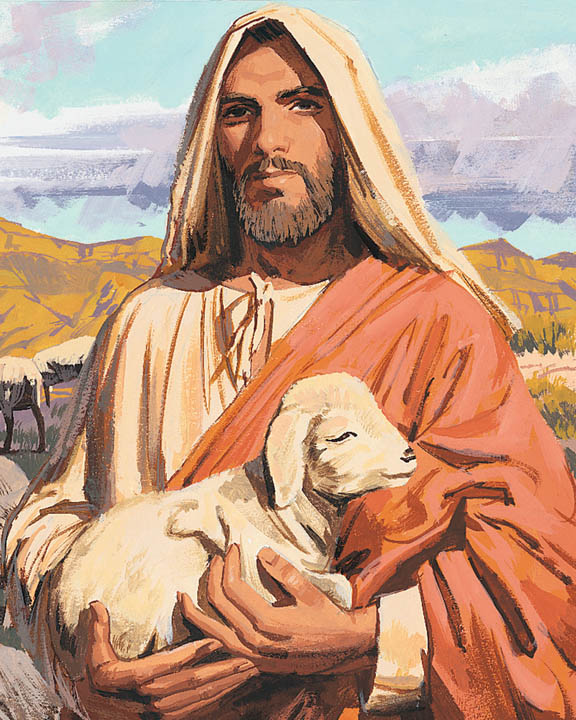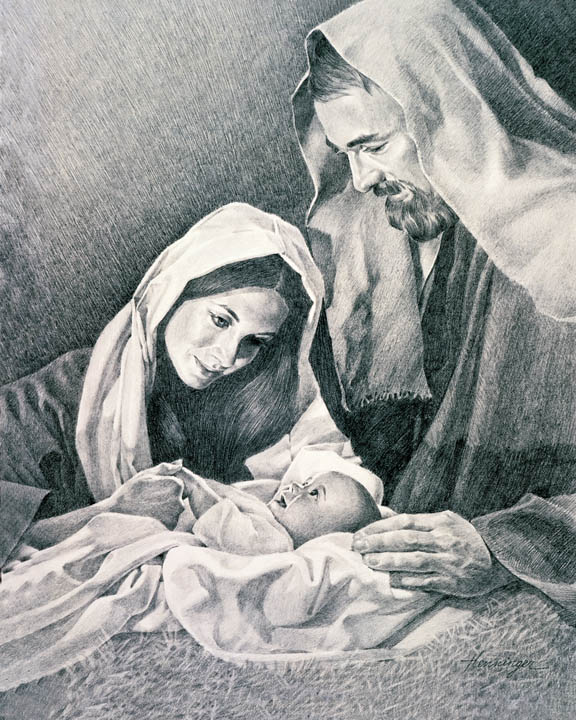Most Christian societies celebrate the birth of Christ in the winter in late December or early January, but most scholars believe He was born in the spring. When The Church of Jesus Christ of Latter-day Saints was organized on April 6, 1830, the Lord said it had been 1830 years since the birth of Christ. Holding with the imagery of the Jewish high holy days, given to the Israelites by the Lord as they wandered in the wilderness, Jesus Christ is the Passover lamb. In fact, the Apostle Paul called Him such. It is therefore this author’s theory (after much research) that Christ was born on the Passover, early in April, 1 B.C. In fulfillment of the Passover imagery, He was born as a lamb, in a stable.
 Because Jesus was the Son of the Divine Father, He had the power over life and death. No man could take His life from Him; on the cross, He freely gave it. Because Jesus had a human mother, He was able to die for us. This also gave Him the capacity to suffer hunger, thirst, pain, and loneliness, and therefore develop compassion for us.
Because Jesus was the Son of the Divine Father, He had the power over life and death. No man could take His life from Him; on the cross, He freely gave it. Because Jesus had a human mother, He was able to die for us. This also gave Him the capacity to suffer hunger, thirst, pain, and loneliness, and therefore develop compassion for us.
Roman Taxation
Caesar Augustus was the ruler in Rome at the time, and Judea was subject to Roman rule. In 1 B.C. Augustus ordered a general taxation throughout his empire.
“The taxing herein referred to may properly be understood as an enrollment, or a registration, whereby a census of Roman subjects would be secured, upon which as a basis the taxation of the different peoples would be determined. This particular census was the second of three such general registrations recorded by historians as occurring at intervals of about twenty years. Had the census been taken by the usual Roman method, each person would have been enrolled at the town of his residence; but the Jewish custom, for which the Roman law had respect, necessitated registration at the cities or towns claimed by the respective families as their ancestral homes.” ( Jesus the Christ, pp. 91–92.)
It should be noted that the Romans often took a general count of the Jews at the time of the Passover, when the largest pilgrimage gathering took place. In Josephus we read that in the time of Cestius (70 A.D., when Jerusalem was laid siege and destroyed) 250,000 lambs were slaughtered for Passover. Since ten people usually shared a lamb, the Romans could surmise that there were 2,500,000 Jews in Jerusalem at the time. This is actually horrifying, because they were pinned inside the walls of the city, which was about .6 mile square.
Mary and Joseph
The Bible gives the genealogy of Joseph, but Joseph was not the literal father of Jesus Christ; God was. However, Joseph and Mary were cousins, so she was also descended from the Davidic Kings. When Mary conceived after being overshadowed by the Holy Ghost, she was “espoused” to Joseph. According to Jewish tradition, the espousal leading to the formal marriage was itself a binding religious covenant. She was as good as married to Joseph. When Joseph learned that Mary was with child, he had two choices—1) he could demand that Mary submit to a public trial and judgment, which even at that late point in Jewish history may have resulted in Mary’s death; or (2) he could privately sever the espousal contract before witnesses. Joseph made the most merciful choice.
After Joseph had made his decision, then the angel visited him and directed that he should proceed and take Mary as his wife. Mormonism teaches that before the earth was, noble and great spirits were chosen, or “foreordained” to lead out in Heavenly Father’s kingdom on earth. Foreordination is not the same as predestination, because there is freedom of choice, always. Both Mary and Joseph were chosen before they were born ( Mosiah 3:8 ; Alma 7:10 ; 1 Nephi 11:15, 18–21 ; Isaiah 7:14 ).
 Mary, burdened by advancing pregnancy, and Joseph made their way to Bethlehem, the birthplace of David, to register for the Roman census. The roads must have been clogged with people. We know from the account in Luke 2:44 that Mary and Joseph yearly made pilgrimage to Jerusalem for the Passover in caravan with their kinsfolk. They may have done this just before Jesus’ birth. Bethlehem was a near suburb of Jerusalem, so a little side trip there must have seemed do-able. They could easily have traveled there, registered, and rejoined their family in Jerusalem in one day.
Mary, burdened by advancing pregnancy, and Joseph made their way to Bethlehem, the birthplace of David, to register for the Roman census. The roads must have been clogged with people. We know from the account in Luke 2:44 that Mary and Joseph yearly made pilgrimage to Jerusalem for the Passover in caravan with their kinsfolk. They may have done this just before Jesus’ birth. Bethlehem was a near suburb of Jerusalem, so a little side trip there must have seemed do-able. They could easily have traveled there, registered, and rejoined their family in Jerusalem in one day.
Shepherds and Wise Men
In the biblical account, we see that some faithful people had been prepared through the inspiration of the Holy Spirit to know that the Messiah’s birth was imminent. Elizabeth, the mother of John the Baptist was one, and Simeon in the temple was another. The shepherds who beheld the angels singing must have been humble followers of the Lord. They were indeed blessed. The wise men were probably either Jewish sages from Babylon or Zoroastrian priests. They arrived long after Mary and Joseph had left the stable where Jesus was born. The new star in the sky, which was a sign of the Christ-child’s birth, was also seen half a world away, by the Book of Mormon peoples in America. Through their prophets, they had been promised a sign of the Savior’s birth. A new star arose, and they experienced a day, a night, and a day with no darkness.
Herod’s Edict and the Death of Zacharias
John the Baptist was a small child, just six months older than Jesus, who also lived with his parents in the vicinity of Bethlehem when Herod gave out the order to murder the babies. John escaped murder by the selfless courage of his father, Zacharias. The Prophet Joseph Smith taught:
“When Herod’s edict went forth to destroy the young children, John was about six months older than Jesus, and came under this hellish edict, and Zacharias caused his mother to take him into the mountains, where he was raised on locusts and wild honey. When his father refused to disclose his hiding place, and being the officiating high priest at the Temple that year, was slain by Herod’s order, between the porch and the altar, as Jesus said.” ( Teachings, p. 261. Compare Matthew 23:35 .)
Zacharias died, then, to save his son; he died a noble martyr, perhaps the first of the Christian era.
